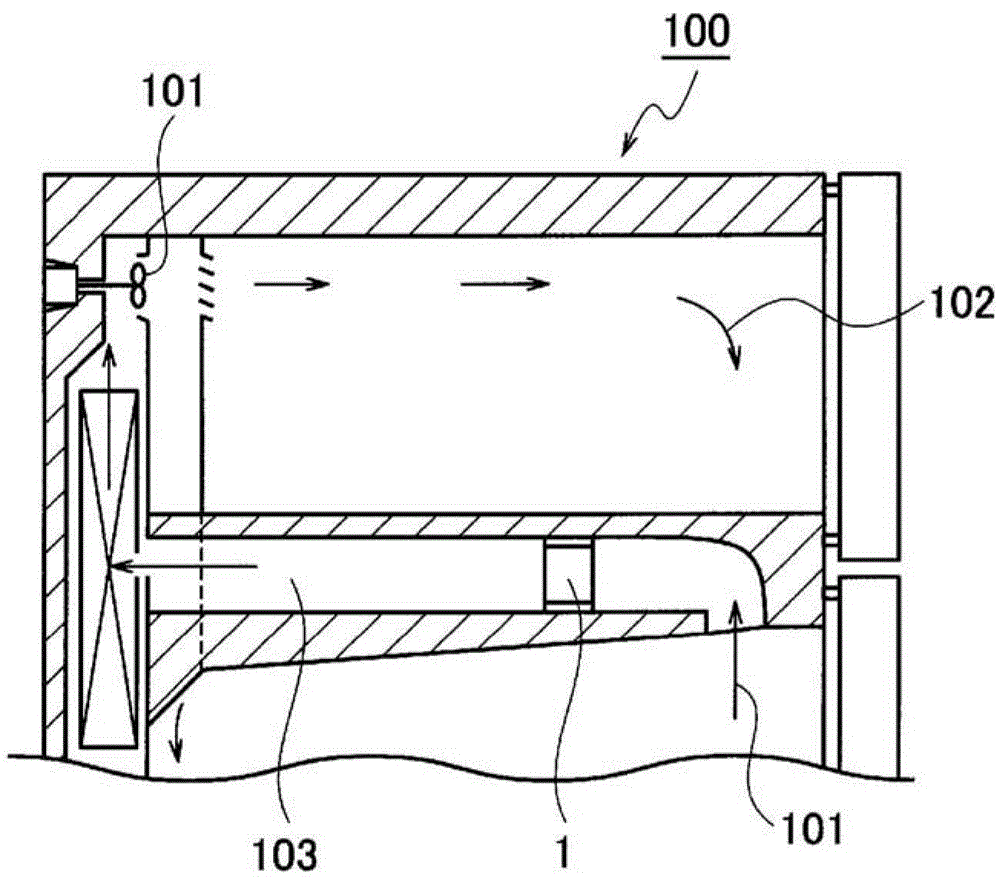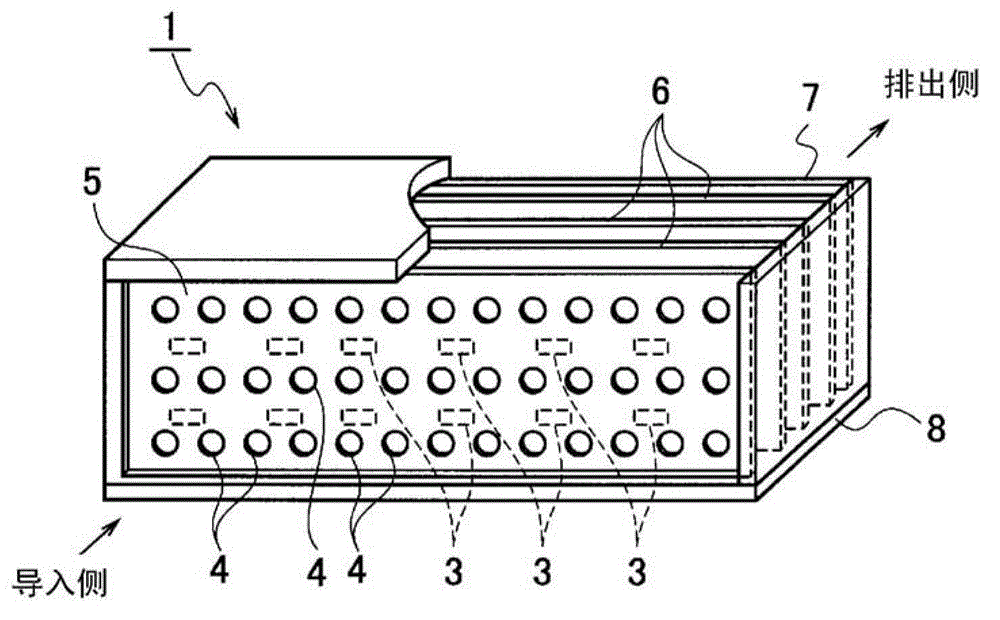Photocatalyst deodorization device
A photocatalyst and photocatalytic technology, applied in deodorization, physical/chemical process catalysts, household refrigeration devices, etc., can solve problems such as corrosion, reduced illumination, and inability to commercialize, reduce flow path resistance, and reduce pressure loss. , the effect of long life
- Summary
- Abstract
- Description
- Claims
- Application Information
AI Technical Summary
Problems solved by technology
Method used
Image
Examples
no. 1 Embodiment approach
[0064] The photocatalyst deodorizing device 1 of an embodiment of the present invention is as figure 1 A device installed in the box of the refrigerator 100 for deodorization is shown. In the box of the refrigerator 100, the cooling fan 101 is used to circulate the cold air 102 in the box at a low wind speed, for example, a wind speed of 0.2 m / sec to 3 m / sec. The photocatalyst deodorizing device 1 of the present embodiment is installed in the cold air passage 103 for use in order to deodorize the air in the box without obstructing the flow of air at such a low wind speed.
[0065] Such as Figure 2 ~ Figure 4 As shown, the photocatalyst deodorizing device 1 of the present embodiment is composed of LED3 for exciting the particles of the photocatalyst carried; an LED mounting substrate 5 provided with a plurality of vent holes 4 and mounted with LED3; and arranged substantially parallel to it A plurality of photocatalytic sheets 6; an opposing substrate 7 provided with ventilation ...
no. 2 Embodiment approach
[0083] Next, the photocatalyst deodorizing device 1 of the second embodiment of the present invention will be described. The photocatalyst deodorizing device 1 of this embodiment is also like figure 1 What is shown is a device installed in the box of the refrigerator 100 for deodorization. In addition, the structure of this embodiment is the same as that of the first embodiment, such as Figure 2 ~ Figure 4 As shown, LED3 used to excite the particles of the supported photocatalyst; LED mounting substrate 5 provided with a plurality of vent holes 4 and mounted with LED3; a plurality of photocatalytic sheets 6 arranged substantially parallel to it; and The LED mounting substrate 5 is provided with a counter substrate 7 provided with vent holes 4 arranged substantially parallel to each other, and a housing 8 formed of a frame that maintains the positions of these plates and maintains a reinforced shape.
[0084] In the case of this embodiment, the wavelength of the LED3 mounted on t...
Embodiment 1
[0092] Using the photocatalyst deodorizing device 1 of the first embodiment, the area using the photocatalyst sheet is 50 cm 2 , 1g of titanium oxide (80% of anatase type, 20% of rutile type) is supported on the photocatalyst, and the intensity of light generated by LED3 using ultraviolet light is 2mW / cm 2 The photocatalyst deodorizing device 1 was tested in a refrigerator with an initial concentration of 5 ppm of acetaldehyde. Such as Picture 9 As shown in the graph, when compared with the deodorizing performance of the photocatalyst deodorizing device using the conventional example, it was confirmed that the acetaldehyde decomposition performance of the photocatalyst deodorizing device of Example 1 was about 10% higher.
PUM
| Property | Measurement | Unit |
|---|---|---|
| diameter | aaaaa | aaaaa |
| diameter | aaaaa | aaaaa |
| wavelength | aaaaa | aaaaa |
Abstract
Description
Claims
Application Information
 Login to View More
Login to View More - R&D
- Intellectual Property
- Life Sciences
- Materials
- Tech Scout
- Unparalleled Data Quality
- Higher Quality Content
- 60% Fewer Hallucinations
Browse by: Latest US Patents, China's latest patents, Technical Efficacy Thesaurus, Application Domain, Technology Topic, Popular Technical Reports.
© 2025 PatSnap. All rights reserved.Legal|Privacy policy|Modern Slavery Act Transparency Statement|Sitemap|About US| Contact US: help@patsnap.com



